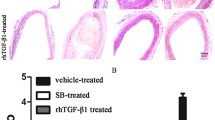Abstract
Neointimal hyperplasia, smooth muscle cell (SMC) proliferation, and extracellular matrix (ECM) synthesis invariably follow vascular injury. A number of biologic and rheologic factors have been identified that contribute to the random variability during the post-injury repair phase. Accumulation of ECM after arterial injury is an important event in the development of fibrocellular intimal thickening and is central to vascular remodeling. This response can be regarded as highly dynamic that not only determines the physical elastic properties of the vessel wall but also its cellular components via growth factors, cytokines, and metalloproteinases. It has been estimated in clinical and experimental models that at 3 months following injury, ECM comprises greater than 80% of the neointimal volume with less than 11% occupied by cellular (SMC, fibroblast, foam cells) constituents. This paper broadly highlights the important role of ECM during vascular injury and repair.
Similar content being viewed by others
Author information
Authors and Affiliations
Rights and permissions
About this article
Cite this article
Karim, M. In vivo role of the extracellular matrix during vascular repair. Basic Res Cardiol 93 (Suppl 3), s050–s054 (1998). https://doi.org/10.1007/s003950050214
Issue Date:
DOI: https://doi.org/10.1007/s003950050214




